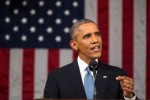With time winding down in Barack Obama’s presidency, the ever-daunting question that history asks is: How do we judge the eight years he’ll have spent in the Oval office?
This question is difficult to address when discussing Obama’s presidency, given that he started it with such fanfare. The catchy 2008 slogan “Change we can believe in” was easy to latch onto, but didn’t see much follow-through. Guantanamo Bay is still open, and many George W. Bush-era tax cuts still exist in the 2012 American Taxpayer Relief Act.
Such broken and superficially kept promises have created a perception that Obama is an appeaser because he is willing to bargain with promises when negotiations become difficult, such as not eliminating capital gains taxes on start-ups and small businesses. And his eloquent and rhetorically sound speeches, which in the past inspired widespread grassroots activism and cultivated an unprecedented following of celebrities that got him elected, have only bolstered this perception because the reality has simply not matched up to the hype and immense expectations.
But, this perception is beginning to change. In the face of his diminishing time as president, coupled with Republican majorities in Congress, a more defiant and assertive Obama is emerging. On Tuesday,Obama used a presidential veto on the flagship Republican Keystone XL pipeline bill, which is a monumental act considering he has only vetoed two bills prior to this one since elected. In comparison, George H.W. Bush used 44 vetoes in one term and Bill Clinton used 37 in his two terms.
The final years of Obama’s presidency will be a struggle between a Republican-controlled Congress and the executive branch to pass laws. However, Obama should use more presidential vetoes and executive orders to illustrate that he can circumvent Congress, if necessary, to keep the promises he made in his State of the Union address. Such promises include free community college tuition, tax credits for the middle class, a tax hike on capital gains, higher minimum wage and the closing of tax loopholes for corporations.
Although vetoes and executive orders will leave Obama vulnerable to criticism, he must continue to illustrate strength in achieving his goals. Obama’s willingness to circumvent Congress is most notably seen in his executive action on immigration when Congress consistently failed to provide immigration reform despite Obama’s persistent requests. And despite current injunctions against his executive action from federal judges, the Obama administration is fighting to implement the order. These actions show Congress he is willing to maintain his promises, differing significantly from his prior appeasement-like attitudes toward Congress.
Such defiant actions, such as the Keystone veto, were not well received by Senate and House leadership. Republicans say the Keystone bill would provide thousands of jobs. In a submission to USA Today, House Speaker John Boehner and Senate Majority Leader Mitch McConnell said, “The president is sadly mistaken if he thinks vetoing this bill will end this fight. Far from it. We are just getting started.”
And Republicans are right – the fight is just getting started. Earlier this month, in a largely symbolic gesture to illustrate that the House is under Republican control, the House passed a bill to repeal Obamacare, even after failing to repeal or undermine some or all of the law more than 50 times.
But with nothing to lose in his final years and everything to gain in terms of legacy, this 2015, a more defiant and assertive Obama may be the one to provide “change we can believe in.”
